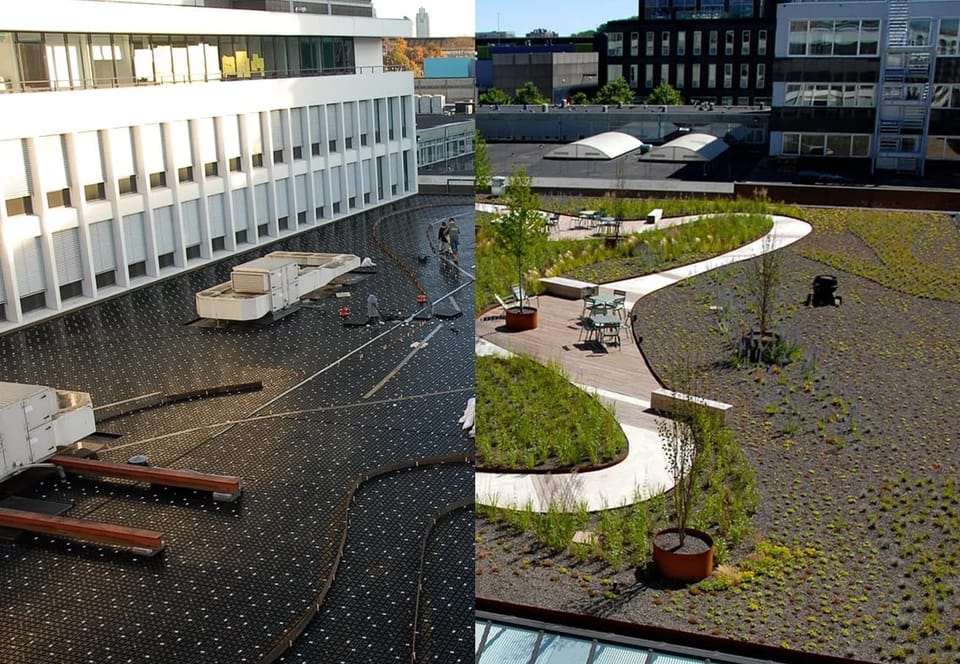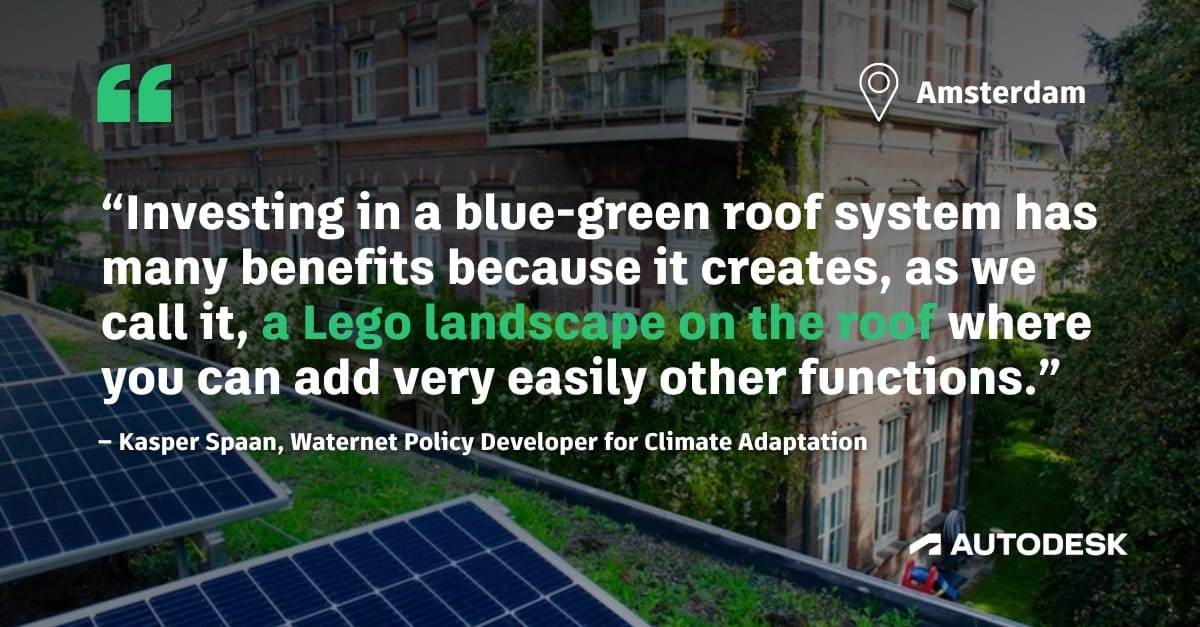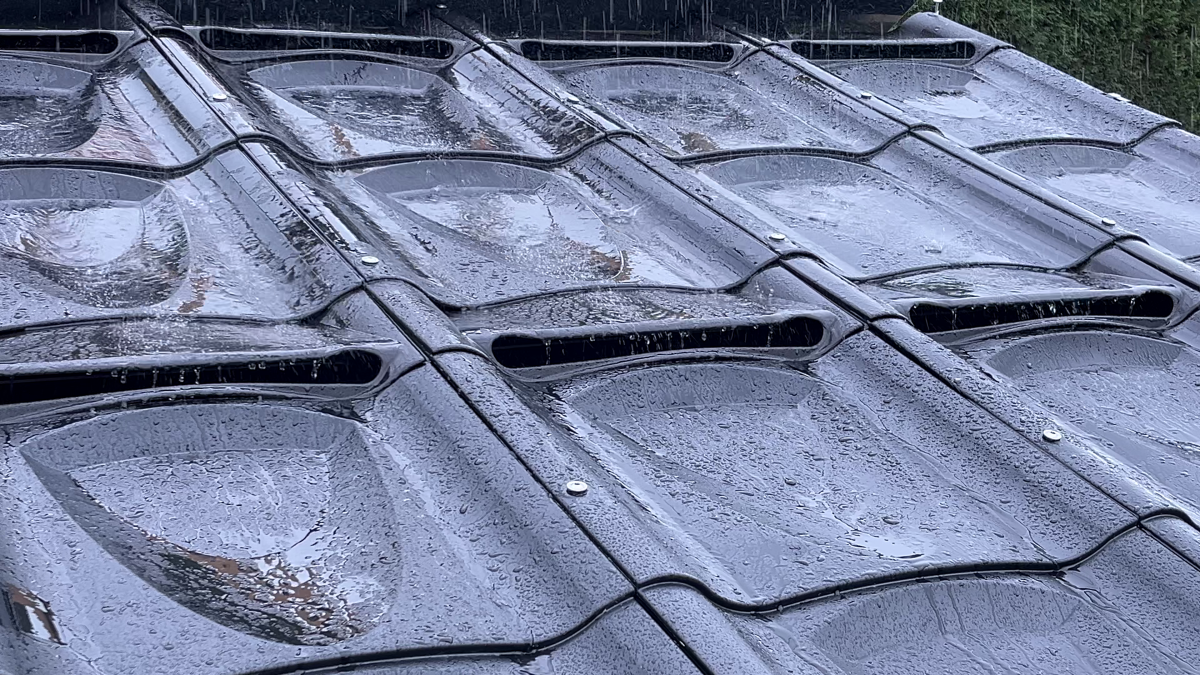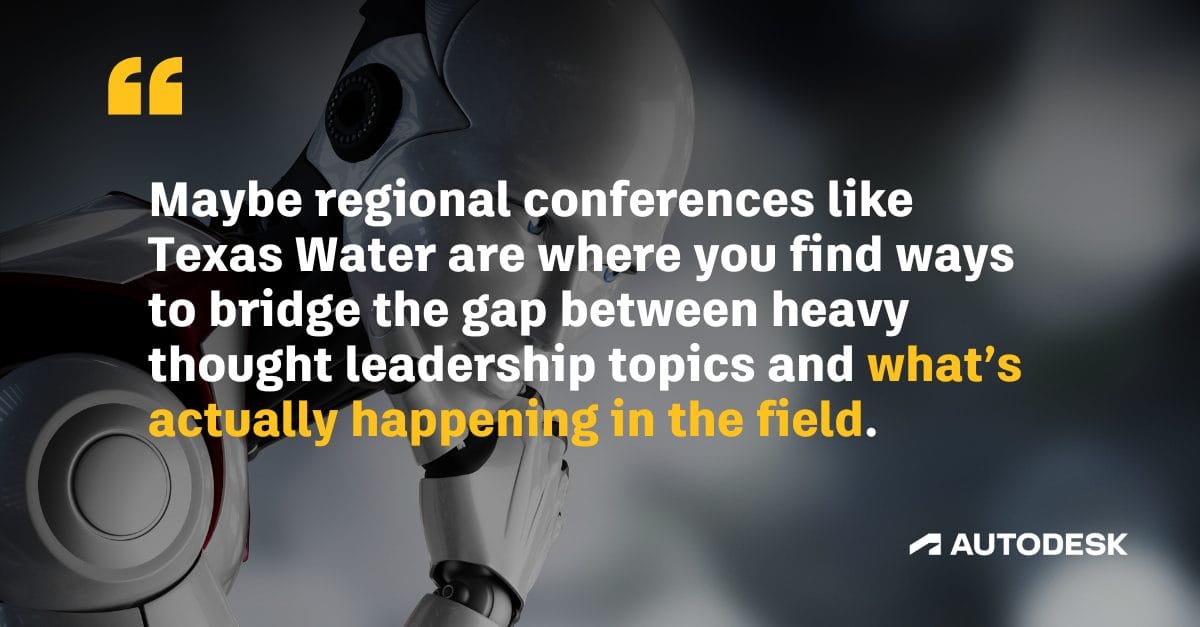Let's get small on Earth Day

Happy Earth Day! Hot on the heels of World Water Day, which was a few weeks ago, comes Earth Day. The water challenges of the planet are so big that it might help us to think a little bit smaller. So this time around, we're spotlighting microwater management innovations – ideas that might seem small but that have huge potential.
Wired writes about blue-green roofs
We're very excited to report that Matt Simon of Wired Magazine saw our recent customer story Putting the squeeze in sponge cities and dug into the topic himself. We connected him with Autodesk's Amy Bunszel to talk about how InfoWorks ICM helped with flood modeling for this project and with Waternet's Kasper Spaan (our customer) for all the background on the innovative RESILIO project in Amsterdam.

The resulting article was published today: Green Roofs Are Great. Blue-Green Roofs Are Even Better. A good read! We especially love this quote from Kasper, who has a knack for talking about these subjects:
“Our philosophy in the end is not that on every roof, everything is possible, but that on every roof, something is possible." – Kasper Spaan, Waternet
Matt Simon also wrote an eye-opening book about dangers that are very small but that threaten to overwhelm us all: A Poison Like No Other: How Microplastics Corrupted Our Planet and Our Bodies.
How about a roof with special shingles?

There's a lot more innovation being dreamed up by roof watchers. Cactile is an idea from French engineer Jean-Baptiste Landes to build a tile-based system of roof shingles that captures and stores rainwater, in theory up to 40 liters per square meter. This an excellent example of microwater management that pushes the theoretical ideas behind decentralizing water capture into a very practical mold.
More H20 innovations from the lowlands
I'm biased because I live in Amsterdam, but it feels like the Netherlands is a hotbed for water innovation. The blue-green roof story isn't an outlier. Here are a few great stories to share that you may or may not have heard of that show you how high-tech and low-tech can work together to solve water problems.
Have you seen the Fish Doorbell? It's a crowdsourced way to monitor a lock in an Utrecht canal. You watch the camera feed and hit the doorbell when you see a fish. The lock operator receives a notification encouraging them to open the locks and let the fish through. Get your clicking finger ready and try it yourself.

How about the Great Bubble Barrier? The idea to use a hose with some holes punched in it to collect plastic detritus began four years ago in Amsterdam and has been slowly snaking its way throughout the country, with a 5th Bubble Barrier recently added in the port city of Harlingen. This idea is spreading, too: Plastic-choked rivers in Ecuador are being cleared with conveyor belts.
So simple. So effective. So Dutch.
The Guardian has the best water beat reporters
Water is a growing topic in the media, and the UK's Guardian newspaper has some of the best reporting on water issues, both at home and abroad:
- Colombians told to shower with a partner as drought hits capital water supplies (hat tip to Robert Dickinson for the link)
- California cracks down on water pumping: ‘The ground is collapsing’
- Australia among hotspots for toxic ‘forever chemicals’, study of PFAS levels finds
- They have an RSS feed for their Water stories if you are a serious water nerd.
Take shorter showers: Knowing is half the battle
An interesting new study with a very long name, Reducing Shower Duration in Tourist Accommodations: A Covert True Experiment of Continuous Real-Time Eco-Feedback and Persuasive Messaging, has shown that a simple timer can shorten your shower, even when you have no incentive to save water.
The EPA weighed in on PFAS
- Environmental Working Group had the best explainer we read last week about the EPA's recent PFAS drinking water standards.
- EWG has also mapped sites with known PFAS detections. You can check to see whether your city or water utility has detected PFAS.
- If you're in the US, you can search for your ZIP code on their Tap Water Database to find out what kind of pollutants may be in your water.

Free water, courtesy of Mother Earth
More rain falls on the city of Arizona than its citizens use, but it just washes away. Instead, they import water from the Colorado River 300 miles away. Newsletter reader and librarian Marianne from Athens, Georgia shared this excellent video with us about how Brad Lancaster has been harvesting rainwater to grow a beautiful garden in what is practically the desert.
The shocking truth about rewenable energy?
Don't let Earth Day get you down. Things might not be so bad after all. Did you know that Seven countries now generate 100% of their electricity from renewable energy? Plus, 47 countries in 2021 or 2022 had more than 50% of their electricity provided by renewables.
“We don’t need miracle technologies. We need to stop emissions by electrifying everything and providing the electricity with Wind, Water and Solar (WWS), which includes onshore wind, solar photovoltaics, concentrated solar power, geothermal electricity, small hydroelectricity, and large hydroelectricity.” – Stanford University Professor Mark Jacobson
Maybe the answer to our energy problems was whispering to us in the wind all along - in broad daylight even.
One Water Blog: 2025 releases
While this newsletter is mostly about small things, we've had some releases lately that are actually not very small at all. We hope our customers will jump in and try out all the new features from these big "2025" releases, which our product people and product marketers did a great job of summarizing:
Powerful cloud simulation capabilities and flexible ways to work with InfoWorks ICM 2025 by Trevor English and Sophia Buchanan
Water distribution modeling integration with asset management for InfoWorks WS Pro and InfoWater Pro 2025 by Nathan Gerdts and Trevor English


InfoDrainage 2025: Generating responsive flood maps with the Machine Learning Deluge Tool by Samer Muhandes and Trevor English
A big batch of Info360 Insight and Info360 Plant improvements by Patrick Bonk
Everything's bigger in Texas
Trevor English went to Texas Water recently, which is a fun and friendly regional convention for water professionals. He summarized his experience on the blog: AI, ML, and sensors: Texas Water is a good measure of the water industry at large.

It's time to reconsider your lawn. Water you waiting for?
According to the EPA, 29% of all water used by the average American home is devoted to outdoor use. In fact, it is estimated that the average American home uses 50,500 gallons of water outdoors each year, mostly for irrigation. That’s enough water combined to fill 5 million Olympic-sized swimming pools – every year.

Spring is here, which means plants are about to start growing like crazy. On this Earth Day, think about your own water usage. Do you have a yard with a lawn? This is your chance to get really small: Are you ready to ditch your lawn and save 50,000 gallons of water?
Toss out a few wildflower seed bombs, and you're in business.
Read our blog. Talk to us on LinkedIn. Follow us on YouTube.
Got a link that you think our readers will drink up? Reply to this email with your link, and let us where you're calling from. Many thanks to all of our recent subscribers from Europe, who are representing in a big way.
Doing our best to make every link matter.
